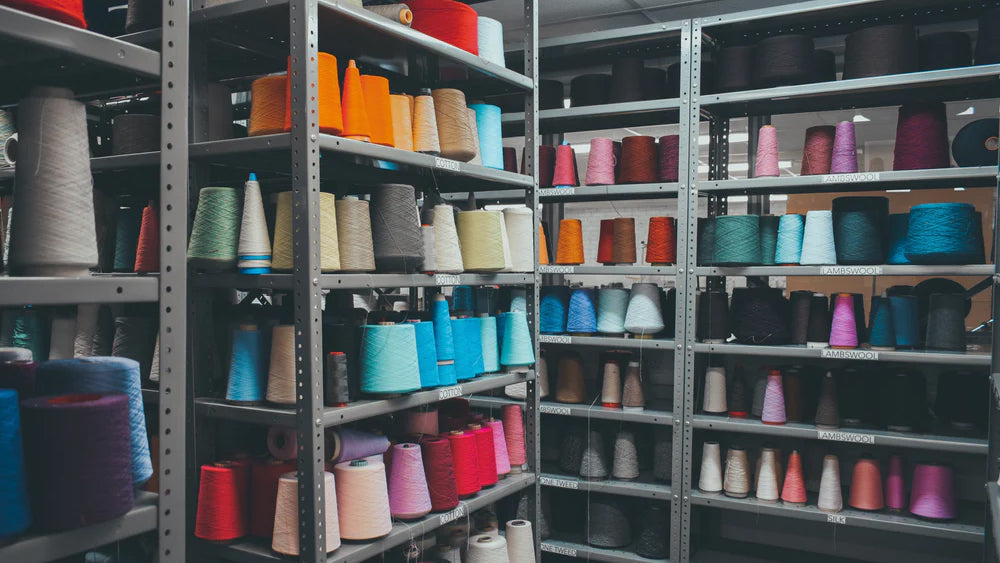The delicate art of embroidery is essential to fabric work and holds a long, storied history. The practice is defined as decorating textile fabrics by stitching thread to fabric with a needle or fine wire. Embroidery is not only a craft but an art form and has been used for centuries to create intricate patterns and designs on everything from clothing to tents and curtains.
The same technique that we use today to stitch Nike logos into hoodies was once used to stitch family crests into armor and banners. While the methods may have changed, the aims of fabric workers have stayed the same. Embroidery takes a good piece of fabric and embellishes it with all the proper finishes and flourishes that make it something more.
There is evidence of embroidery going as far back as the time of the Ancient Egyptians and the oldest preserved embroideries date somewhere between 500 and 300 BCE. This makes the craft older than many entire cultures, and it stands as one of the oldest practices in textile work.
Where did embroidery originate?
Early evidence of embroidery has been found across the globe which makes it difficult to determine where exactly it originated. The earliest embroideries come from Scythia, or what is roughly what we now know as Siberia, in 500 and 300 BCE. There is also preserved evidence of embroidery from China during around the same time period. Early works in China date back to between 500 and 300 BCE though the most famous Chinese examples appear more recently in silk robes from the Tang Dynasty in 1644.
But how was this ingenious artform discovered? The practice of stitching, used to tailor and patch garments, is where the technique for embroidery was discovered. Instead of simply mending a piece of fabric to cover a hole, early embroiderers discovered that they could use the same principles to create ornate designs.
The art of embroidery stretches far and wide and several different countries and groups of people became known for their fine craftsmen. Byzantium produced fabric embellished with gold stitching from 300 CE all the way to the 1500s. During the Medieval Islamic world, embroidery became immensely important.
Because the practice of embroidery arose in so many different countries, many different geographically specific techniques emerged. In Norway we received Hardengar, in Ireland there was Mount Mellick embroidery, Sashiko from Japan and Nakshi Kantha from Bangladesh.
Embroidery would quickly take the textile world by storm but its uses have varied over the years. During certain periods it’s been used by elite groups of craftsmen, while at other times it has been a widespread practice of the masses.
Maybe you wouldn’t expect embroidery to appear alongside other fine arts like painting and sculpting, but there is a reason why we call it an artform. It’s where creativity, practicality and precision collide. Like pottery, it can be decorative or it can be useful, and it’s sometimes both! Take for example the Sashiko technique from Japan, which is used to patch garments with clever patterns.
The invention of machine looms in France during the mid-1800s revolutionized how fabric was embroidered. Embroidery was suddenly no longer seen as a delicate craft as embroidered items could now be mass-produced. But this didn’t stop people from embroidering by hand. The act of hand embroidering took on new meaning, and became powerful in its rejection of automation.
Embroidery's importance in Social Movements
Throughout the history of embroidery it has often been seen as gendered craft, with strong ties to women. In the past, many cultures viewed it as a job or hobby for women, but consequently, it became used as a tool for marginalized groups to tell their stories. Many women, particularly women of color, who lacked formal education or writing materials were still taught to embroider. This allowed them to document their lives in fabric.
Companies use Embroidery to build their Brand
For many companies, embroidery became an essential tool for branding. The practice of using embroidery machines to adorn clothes with company logos has been a prominent feature in the modern history of embroidery. The presentation of a logo on a piece of clothing is a powerful thing, signifying a garment’s value while serving as advertising for the company who makes it.
Major clothing companies like Ralph Lauren, Nike and Adidas are just a few brands that have been known to use embroidered logos on their pieces.
Embroidery is also used in everyday life
In the last few decades, embroidery has made a comeback, both as a hobby and a fine art. It’s not just for big brands or social movements. Many people have taken on embroidery to make DIY clothing designs or simply as a fun creative outlet. The value of making something beautiful with your hands can never be overstated!
Embroidery is still used today
Embroidery is one of the oldest forms of textile craftwork around. It belongs to a long tradition of beauty and artisanship and serves as an important piece of how we understand modern clothing brands.
For twenty years, Thread Logic has been a part of that tradition, producing some of the finest embroidered logos available. We take our role in the history of embroidery seriously and are committed to high-quality craftsmanship. For more info on how you can have your logo embroidered today, contact us here!
If you want to learn more about the history of embroidery, check out these helpful resources.


